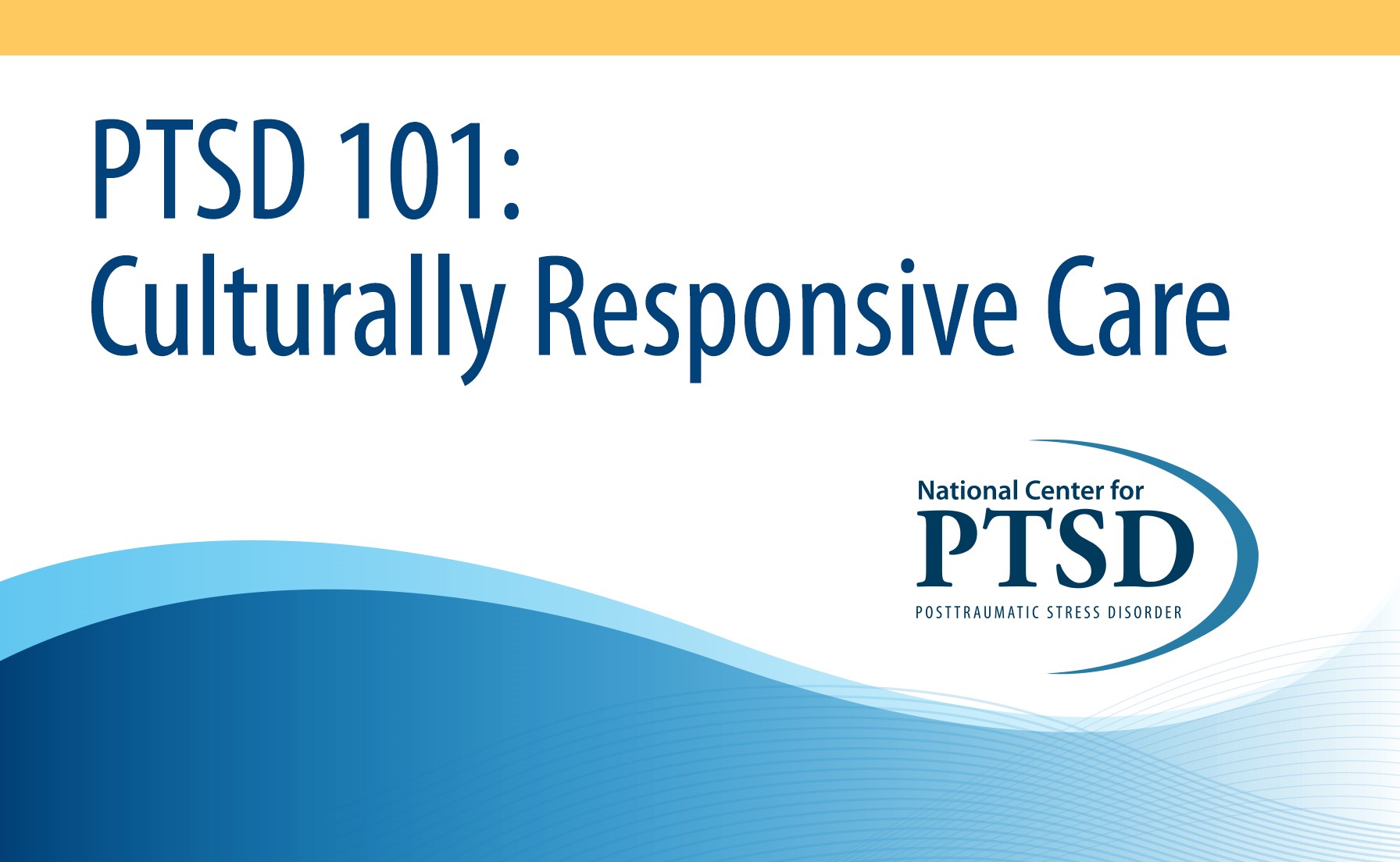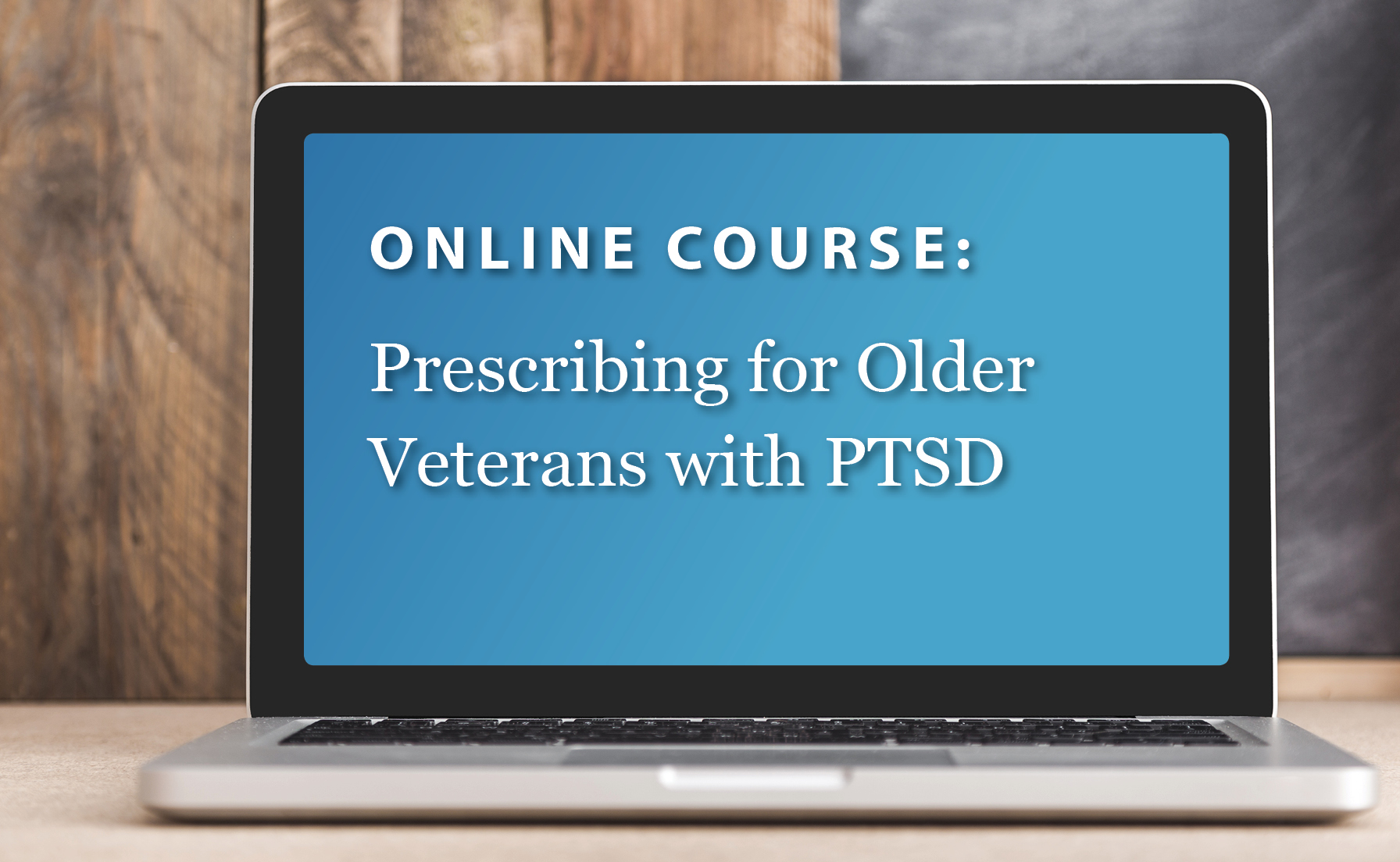assessment-considerations-lgbtq
Assessment and Treatment Considerations for Working With LGBTQ+ Clients With PTSD
Sarah E. Valentine, PhD, Nick A. Livingston, PhD, Anna C. Salomaa, PhD, & Jillian C. Shipherd, PhD
LGBTQ+ is an acronym that stands for those who identify as lesbian, gay, bisexual, transgender or queer. The "+" indicates any other minoritized identities such as intersex, asexual, pansexual or nonbinary.
LGBTQ+ individuals are at greater risk for experiencing traumatic events such as assault and violence and therefore have higher rates of PTSD than those in the general population. They are also more likely to experience additional burdens related to discrimination, social exclusion, and other minority stressors. Despite an increased need for support, LGBTQ+ individuals may be hesitant to seek treatment due to expectations of discrimination in health care settings. These additional burdens, and poorer quality of care, place LGBTQ+ people at higher risk of developing mental health problems.
This article orients clinicians to central concepts of creating a safe, welcoming and affirming care environment for PTSD treatment. Next, considerations for assessment, case conceptualization, and treatment approaches for PTSD that are relevant to LGBTQ+ clients are reviewed. See Trauma, Discrimination and PTSD Among LGBTQ+ People for more background information.
Setting the Stage: Central Concepts for Providing Safe, Welcoming and Affirming Care
Due to historical and ongoing maltreatment in health care, LGBTQ+ clients may express mistrust of medical and mental health providers. Concerns about trust and safety may be heightened for LGBTQ+ who have also experienced interpersonal trauma.
Clinicians and their practice settings can take steps to create an environment of safety and inclusion by:
- Establishing clear non-discrimination policies that are posted publicly
- Providing training on health of LGBTQ+ people
- Establishing a formal process to allow LGBTQ+ clients to raise issues or complaints
Other system- or clinic-level approaches might include:
- Reviewing intake forms and paperwork to ensure inclusive language for assessing sexual orientation and gender identity and removing language that assumes cisgender (i.e., gender identity that is the same as sex assigned at birth) or heterosexual experience
- Ensuring the use of inclusive images on educational materials or posters and offering LGBTQ+ health-specific information for clients (e.g. VHA Fact Sheets )
- Improving gender-inclusiveness of bathroom signage
At the individual clinician level, this may entail:
- Starting sessions with a provider stating the name they go by and their pronouns
- Asking all patients the name and pronouns they use
- Asking about relationships in an inclusive fashion (i.e., not assuming heterosexual or cisgender identity), for example, "Who are the important people in your life?"
- Displaying LGBTQ+ safety cues (e.g., symbols, flags, signage)
Comprehensive Assessment of Trauma, Minority Stress and Common Comorbidities
Case conceptualization for LGBTQ+ clients starts with careful consideration of the contribution of various stressor exposures on clinical presentation. This should include assessment of trauma and minority stressors, as well as common mental health consequences of both, including PTSD, depression, anxiety, substance use and suicidality. For example, clinicians may better understand causes of symptoms by directly asking clients' perceptions of whether presenting concerns are related or not related to their LGBTQ+ identity (e.g., hate crime, bias assault).
Case Conceptualization and Treatment Planning
Based on minority stress theory, clinicians may conceptualize mental health symptoms as being driven by exposure to a range of high-stress experiences combined with inadequate support structures to prevent harm and foster resilience. Individual-level interventions are appropriate for symptom reduction and for improving coping skills to buffer the effects of trauma and discrimination. Ideally, interventions also foster resilience by addressing social support and community building needs that aim to enhance coping and resistance to minority stressors. System-level interventions may also involve clinicians engaging directly in advocacy work or policy reform to reduce institutional harms to LGBTQ+ people (1).
Treatments Focusing on PTSD Symptom Reduction
The most effective treatment for PTSD is trauma-focused psychotherapy. The most well studied trauma-focused treatments are Prolonged Exposure (PE) , Cognitive Processing Therapy (CPT) , and Eye Movement Desensitization and Reprocessing (EMDR) . These treatments have been shown to be effective across numerous trauma types such as combat, sexual assault, motor vehicle accidents, natural disasters and terrorism. Research consistently supports that these treatments are effective across various populations, including those that are more complex or with comorbidities such as suicidality, borderline personality, psychosis or substance abuse. There is reason to believe that LGBTQ+ individuals with PTSD would respond similarly to efficacious treatments; however, no studies have tested the effectiveness of these treatments in LGBTQ+ samples. There are a few helpful book chapters on application of PE and CPT with LGBTQ+ clients that we recommend (e.g., 2-4). Some modifications might be needed to provide care in a way that is culturally responsive—yet even this remains an empirical question.
General guidance for PTSD-focused treatments
LGBTQ+ clients may be more prone to experience shame-based trauma, adding some treatment complexity relative to fear-based trauma clients (5,6). Although not tested in LGBTQ+ populations specifically, research supports the effectiveness of existing PTSD treatment for shame-based traumas.
Other considerations to support LGBTQ+ clients include:
- Validating clients' experiences by using the labels they use for events (e.g., "trauma") even when the experience is perceived by the clinician as not meeting Criterion A.
- Providing psychoeducation on how minority stress experiences can further complicate the clinical presentation of PTSD (e.g., discrimination events may be trauma reminders; 7).
- Assessing threat responses to LGBTQ+ clients' interpretations of the environment as hostile (5). An accurate view of a hostile situation may benefit from understanding whether a threat response is adaptive or not adaptive, given the context.
Considerations for cognitive restructuring
Cognitive restructuring is a core component of Cognitive Processing Therapy (CPT), one of the most effective treatments for PTSD. The basis of CPT is that thoughts and beliefs that were learned (or strengthened) by trauma experiences inhibit complete processing of the trauma event, stalling recovery. There is some evidence that experiences of discrimination can lead to similar cognitions as trauma (e.g., "I cannot trust anyone," "People will harm me."). It is therefore strongly encouraged that clinicians carefully perform contextual and functional assessment of cognitions prior to using cognitive restructuring. For example, some cognitions may be accurate, and therefore, should not be a focus of cognitive restructuring (e.g., safety beliefs that reflect actual or realistic appraisals of threat). In contrast, other post-trauma cognitions related to identity should be integrated into treatment (e.g., extreme esteem beliefs that reflect internalized stigma such as, "Abuse made me gay,"; identity-linked self-blame beliefs such as, "It's my fault this happened because I shouldn't have left the house expressing as a woman.").
Considerations for exposures
Exposures are a core component of efficacious treatments for PTSD, including Prolonged Exposure (PE).
Imaginal exposures include repeated recounting of the trauma memory to process emotions and gain context and control over the memory. When selecting events for imaginal exposure work, it is important for the clinician to assess the context and the function of a client's cognitive, emotional and behavioral responding. In cases where the index Criterion A event is bias-related, the exposure procedure is the same; however, in processing, the clinician may assist the client in teasing apart which ways of responding were adaptive (protective) and which ways of responding were not adaptive. In these cases, imaginal exposure activates the bias-related trauma memory so that habituation can occur, while also attending to contextual identity-related factors relevant to how the client responded to the event such as realistic appraisals of safety based on sexual orientation or gender identity. Similar to cognitive restructuring guidance, this type of contextual processing allows for new learning and reductions in cognitively-loaded emotions that maybe related to identity (e.g., shame).
In vivo exposures involve engaging with trauma reminders (triggers) and emotions by doing activities that the client has been avoiding since the trauma. The goal is to facilitate habituation and new learning and improve functioning. Because LGBTQ+ clients may regularly encounter unsafe environments, when creating an in vivo hierarchy, we recommend collecting an additional rating representing actual safety risk (beyond just anticipated subjective units of distress). These ratings will help the clinician and client rank and prioritize in vivo exposures that elicit affect but pose little objective risk to safety (e.g., spending more time with affirming peers / engaging with avoided social supports).
Treatments Focusing on Coping Skills Building and Bolstering Social and Community Supports
The application of coping skills and social support / community building interventions may be helpful in addressing distress related to discrimination, internalized stigma (shame), and identity concealment. The state of the evidence of these approaches is preliminary, although this is an area of rapid growth in recent years. Some examples of preliminary research studies in this area include:
- Dialectical Behavior Therapy (DBT) Skills Training: We highly recommend that clinicians aiming to apply the DBT skills training framework to work with transgender and gender diverse clients review work by Sloan and Berke (2018). This approach focuses on addressing chronic invalidation as a driver of emotional and behavioral dysregulation and interpersonal difficulties (conceptualizing both discrimination and trauma on the same continuum of invalidating experiences) and promotes skills development, to replace ineffective coping with effective coping strategies (8). Although DBT skills were originally designed for the treatment of borderline personality disorder (BPD), the skills in this case are being used with LGBTQ+ people to target distress related to chronic invalidation (discrimination/exclusion).
- Transdiagnostic Cognitive Behavioral Therapy Approaches: A study of a transdiagnostic cognitive behavioral therapy (CBT) intervention ESTEEM (Effective Skills to Empower Effective Men) demonstrated efficacy in reducing minority stress processes that underlie sexual orientation-based HIV disparities (9). ESTEEM is an adaptation of the Unified Protocol (10) for gay and bisexual men at risk of acquiring HIV. The intervention includes education on the minority stress model and related cognitive and emotional processes, and CBT techniques such as cognitive restructuring and behavioral exposures. The ESTEEM model has not been tested for other LGBTQ+ groups, nor has it been used to address trauma-related distress.
- Empowerment and Peer-Supported Approaches: Empowerment interventions and peer-based supports that focus solely on the consequences of minority stress may be complementary to PTSD treatment and often are provided in group format. One example is Empowerment Self-Defense programs that have been tailored for LGBTQ+ people (11). Although varied, these programs focus on bolstering self-efficacy, agency and social supports needed to buffer the effects of chronic invalidation, rejection and victimization in the lives of LGBTQ+ people.
Conclusion
This article has provided an overview of assessment, case conceptualization and treatment recommendations for LGBTQ+ people with PTSD. The goal was to note some of the complexities and nuance that are essential to providing care that is both effective and affirming. This includes respectfully asking about a range of stressor exposures—including trauma, discrimination, and other minority stress experiences—as well as asking about linkages between identity, exposures, recovery processes and common co-occurring disorders. Appropriate interventions include existing evidence-based treatments for PTSD, as well as additional supports in preventing and reducing harms caused by discrimination and social exclusion.
References
- Sloan, C. & Shipherd, J. C. (2019). An ethical imperative: Effectively reducing SGM disparities using a multi-level intervention approach. Cognitive and Behavioral Practice, 26 (2), 239-242. https://doi.org/10.1016/j.cbpra.2019.02.001
- Pantalone, D. W., Gorman, K. R., Pereida, E. T., & Valentine, S. E. (2020). Trauma among sexual and gender minority populations. In E. D. Rothblum (Ed.), The Oxford handbook of sexual and gender minority health (pp. 59-72). Oxford University Press. https://doi.org/10.1093/oxfordhb/9780190067991.013.7
- Pantalone, D. W., Valentine, S. E., & Shipherd, J. C. (2016). Working with survivors of trauma in the sexual minority and transgender/gender nonconforming population. In K. A. DeBord, A. R. Fischer, K. J. Bieschke, & T. M. Perez (Eds.), The handbook of sexual orientation and gender diversity in counseling and psychotherapy (pp. 183-211). American Psychological Association. https://doi.org/10.1037/15959-000
- Valentine, S. E., Woulfe, J., & Shipherd, J. C. (2019). An evidence-based approach to conceptualizing trauma responses among transgender and gender non-conforming (TGNC) adults. In S. A. Safren, & J. Pachankis (Eds.), The handbook of evidence-based mental health practice with LGBT clients (pp. 268-290). Oxford University Press. https://doi.org/10.1093/med-psych/9780190669300.001.0001
- Livingston, N. A., Berke, D., Scholl, J., Ruben, M., & Shipherd, J. C. (2020). Addressing diversity in PTSD treatment: Clinical considerations and guidance for the treatment of PTSD in LGBTQ populations. Current Treatment Options in Psychiatry, 7, 53-69. https://doi.org/10.1007/s40501-020-00204-0
- Livingston, N. A., Berke, D. B., Ruben, M. A., Matza, A. R., & Shipherd, J. C. (2019). Experiences of trauma, discrimination, microaggressions, and minority stress among trauma-exposed LGBT Veterans: Unexpected findings and unresolved service gaps. Psychological Trauma: Theory, Research, Practice, and Policy, 11(7), 695-703. https://doi.org/10.1037/tra0000464
- Szymanski, D. M., & Balsam, K. F. (2011). Insidious trauma: Examining the relationship between heterosexism and lesbians' PTSD symptoms. Traumatology, 17(2), 4-13. https://doi.org/10.1177/1534765609358464
- Sloan, C. A., & Berke, D. S. (2018). Dialectical behavior therapy as a treatment option for complex cases of gender dysphoria. In M. R. Kauth & J. C. Shipherd (Eds.), Adult transgender care: An interdisciplinary approach for training mental health professionals (pp. 123-139). Routledge. https://doi.org/10.4324/978131539050
- Pachankis, J. E., Hatzenbuehler, M. L., Rendina, H. J., Safren, S. A., & Parsons, J. T. (2015). LGB-affirmative cognitive-behavioral therapy for young adult gay and bisexual men: A randomized controlled trial of a transdiagnostic minority stress approach. Journal of Consulting and Clinical Psychology, 83(5), 875-889. https://doi.org/10.1037/ccp0000037
- Barlow, D. H., Farchione, T. J., Fairholme, C. P., Ellard, K. K., Boisseau, C. L., Allen, L. B., & Ehrenreich-May, J. (2011). Treatments that work. Unified protocol for transdiagnostic treatment of emotional disorders: Therapist guide. Oxford University Press.
- Berke, D. S., & DeFour, D. (2021). Teaching about empowerment self-defense training for sexual assault prevention: Recommendations for feminist instruction in psychology. Psychology of Women Quarterly, 45(3), 387-394. https://doi.org/10.1177/0361684321998396
You May Also Be Interested In

PTSD 101: Culturally Responsive Care
Understand and develop the components of a culturally responsive case formulation.

PTSD 101: Prescribing for Older Veterans with PTSD
Learn best practices for pharmacological treatment for older Veterans with PTSD.
























